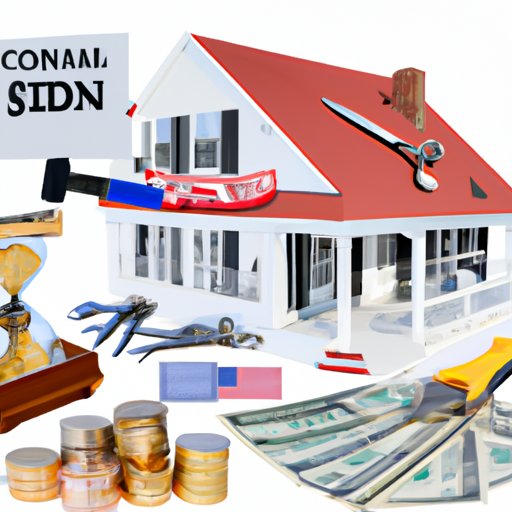Introduction
Building a custom home can be an exciting yet daunting prospect. While you have the freedom to design the perfect home for you and your family, it also requires a significant investment of time and money. One of the most important steps in the process is figuring out how to finance your custom home. This article will explore the different options available for financing a custom home, as well as provide some tips on how to make the process easier.
Savings
One of the simplest ways to finance a custom home is through savings. This option is ideal for those who have saved up enough money to cover the entire cost of their home. The benefits of using savings to finance a custom home are that there are no interest rates or additional fees, and the entire process can be completed quickly. However, this option may not be feasible for everyone, as it requires a significant amount of money upfront.
For those who are looking to save up for a custom home, there are several tips to keep in mind. First, start saving as early as possible. The sooner you start saving, the more money you’ll have when it comes time to purchase your new home. Second, create a budget and stick to it. Knowing exactly how much money you have to spend each month and what expenses you need to pay for will help you stay on track. Finally, look for ways to cut back on unnecessary expenses. This could include cutting down on dining out, shopping trips, or entertainment costs.
Home Equity Loan
A home equity loan is another popular option for financing a custom home. A home equity loan is a type of loan that uses the equity in your existing home as collateral. It’s similar to a traditional mortgage, but instead of borrowing against the value of the home you’re purchasing, you’re borrowing against the value of your current home.
The benefits of a home equity loan are that it typically has a lower interest rate than other types of loans, and you can use the money for any purpose, including purchasing a custom home. However, there are some drawbacks to consider. For example, if you default on the loan, you could lose your home. Additionally, the loan may come with other fees, such as closing costs.
Mortgage
A mortgage is another option for financing a custom home. A mortgage is a loan that is used to purchase a home, and it typically comes with a fixed interest rate and repayment period. This type of loan is often the most affordable option, as it usually has a lower interest rate than other types of loans.
The benefits of a mortgage are that it’s often the most affordable way to finance a custom home, and the repayment period is usually longer than other types of loans. However, there are some drawbacks to consider. For example, the loan may come with additional fees, such as closing costs. Additionally, if you default on the loan, you could lose your home.
Construction Loan
A construction loan is another option for financing a custom home. A construction loan is a short-term loan that is used to fund the building of a home. This type of loan is typically used when the home is being built from scratch, rather than purchased from a builder. The loan is paid out in installments as the construction progresses.
The benefits of a construction loan are that it can be used to finance the entire construction process, from start to finish. Additionally, the repayment period is usually shorter than other types of loans. However, there are some drawbacks to consider. For example, the loan may come with additional fees, such as closing costs. Additionally, the loan may have a higher interest rate than other types of loans.
Personal Loan
A personal loan is another option for financing a custom home. A personal loan is an unsecured loan that is used for a variety of purposes, including home improvements or purchasing a home. Personal loans typically come with a fixed interest rate and repayment period.
The benefits of a personal loan are that it’s an easy way to finance a custom home, as it doesn’t require collateral. Additionally, the repayment period is usually shorter than other types of loans. However, there are some drawbacks to consider. For example, the loan may come with additional fees, such as closing costs. Additionally, the loan may have a higher interest rate than other types of loans.
Conclusion
Financing a custom home can be a complicated process, but it doesn’t have to be. There are several options available, including savings, home equity loans, mortgages, construction loans, and personal loans. Each option has its own benefits and drawbacks, so it’s important to consider all of your options carefully before making a decision. Additionally, it’s important to create a budget and start saving as early as possible to ensure you have the funds necessary to finance your custom home.
In conclusion, financing a custom home can be a challenging but rewarding experience. With the right information and guidance, you can find the best option for financing your new home. Whether you choose to use savings, a home equity loan, a mortgage, a construction loan, or a personal loan, you can be sure that you’ll have the funds necessary to build your dream home.
(Note: Is this article not meeting your expectations? Do you have knowledge or insights to share? Unlock new opportunities and expand your reach by joining our authors team. Click Registration to join us and share your expertise with our readers.)
